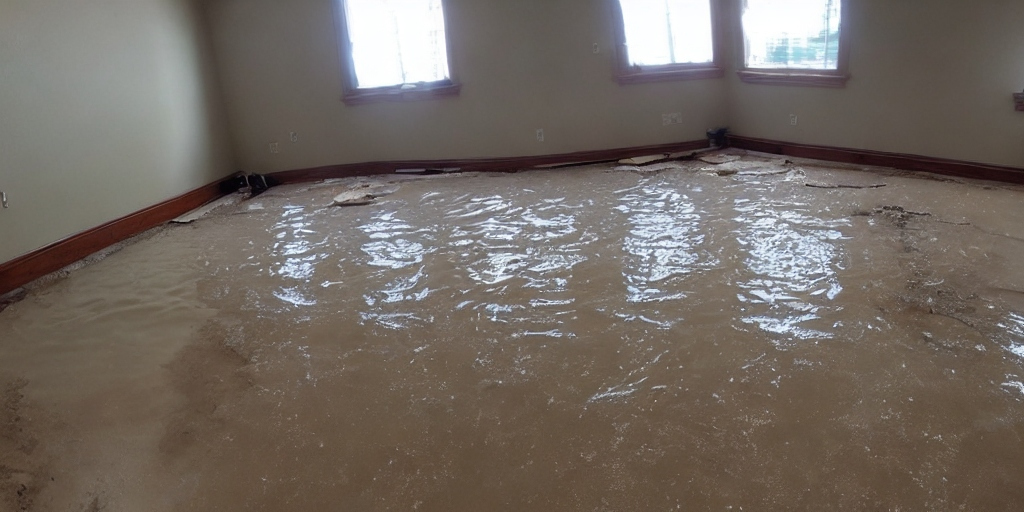Introduction
Water damage is a common yet troublesome issue homeowners may encounter, particularly when it affects the subflooring of a structure. Whether stemming from a leaking appliance, burst pipe, or other sources, water damage to subfloors can lead to significant structural concerns if not promptly addressed. In this guide, we’ll delve into the intricacies of identifying water damage, assessing its extent, and executing effective repairs to restore the integrity of subflooring.
Understanding Water Damaged Subfloors
What Constitutes a Subfloor?
Before delving into repair methods, it’s essential to grasp the composition and function of subflooring. Essentially, the subfloor serves as a foundational layer beneath finished flooring materials such as carpet, hardwood, or tile. Typically constructed from plywood, oriented strand board (OSB), or other sheet materials, the subfloor provides structural support and stability to the flooring system.
Indicators of Water Damage
Identifying water damage to subfloors often requires a keen eye and proactive measures. Common signs include:
- Sponginess and Sagging: When walking across a floor feels spongy or exhibits noticeable sagging, it’s indicative of potential subfloor rot caused by water infiltration.
- Visible Staining or Discoloration: Water stains or discoloration on flooring materials or nearby walls may signal underlying water damage to the subfloor.
- Musty Odors: A persistent musty odor, especially in conjunction with other signs, suggests the presence of mold or mildew resulting from water damage.
Also Read: Restoring Peace of Mind: Water Damage Restoration in Mesa AZ
Assessing the Extent of Damage
Upon discovering potential water damage, it’s crucial to assess its extent before proceeding with repairs. This involves:
- Thorough Inspection: Remove carpets, hardwood flooring, or other surface coverings to expose the subfloor fully. Examine the subfloor for signs of rot, mold, or structural compromise.
- Moisture Testing: Utilize moisture meters or similar tools to gauge the level of moisture present in the subfloor and surrounding materials.
- Consultation: In cases of extensive damage or uncertainty, consider consulting with a professional contractor or structural engineer to assess the situation accurately.
Steps to Repair Water-Damaged Subfloors
1. Stop the Source of Water
Before initiating repairs, it’s imperative to halt the source of water causing the damage. Whether it’s a leaking appliance, plumbing fixture, or external source, address the issue promptly to prevent further damage.
2. Expose and Evaluate the Subfloor
Begin by removing baseboards and any surface coverings to expose the subfloor fully. Assess the condition of the subfloor, noting areas of rot, mold, or structural compromise. If the subfloor appears structurally sound but damp, allow adequate ventilation to facilitate drying.
3. Removal of Damaged Subflooring
In cases where the subfloor exhibits significant damage, removal may be necessary. Follow these steps:
- Cut out damaged sections of subflooring, ensuring to reach solid structural framing.
- If joists or framing members are compromised, assess the extent of damage and proceed with repairs as needed.
- Thoroughly remove all rotted or mold-infested material to prevent further spread of damage.
4. Reinforcement and Installation of New Subflooring
With damaged sections removed, reinforce floor joists as necessary and proceed with installing new subflooring. Consider these guidelines:
- Measure and cut new subflooring to fit the damaged area accurately.
- Utilize appropriate adhesives and fasteners to secure the new subflooring in place.
- Leave a slight gap between old and new subflooring to accommodate expansion and contraction.

LP Legacy Premium Subflooring: A Reliable Solution
When replacing subflooring, consider utilizing LP Legacy Premium Subflooring, renowned for its durability and longevity. Backed by a comprehensive warranty, LP Legacy panels offer superior resistance to moisture and structural integrity, ensuring long-term performance and peace of mind for homeowners.
Also Read: Water Damage Restoration Tampa: Restoring Homes and Businesses in Central Florida
Conclusion
In conclusion, addressing water damaged subfloors requires a systematic approach encompassing identification, assessment, and effective repairs. By promptly addressing water intrusion, removing damaged materials, and installing quality subflooring solutions, homeowners can safeguard the structural integrity of their homes for years to come.
By following the steps outlined in this guide and leveraging quality materials such as LP Legacy Premium Subflooring, homeowners and contractors alike can navigate water damage challenges with confidence, restoring the strength and stability of subflooring for a safer and more resilient living environment.










